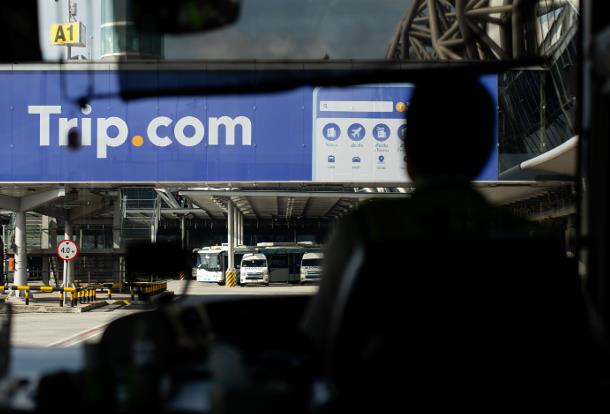ChinaTravelNews, Ritesh Gupta - Witnessing disparity in room rates and rate erosion on the Internet isn’t a new phenomenon. But the level of control that one has in China can be far off, and several aspects need to be introspected before a hotel’s distribution mix attains a healthy picture.
We chose to delve deeper into this issue as we found that a foreign hotel company is struggling to ensure Ctrip goes by the direct contract signed between the two parties. Rather the OTA prefers buying from third parties, in order to compete with the cheaper wholesale rates that are available in the market!
Discrepancy
The discrepancy in pricing on different online platforms is contributed by several reasons:
1. Hotels around the world often practice different tariffs for different purposes/ markets. “For example, you can have an Asian rate, a worldwide rate, a China market rate etc. You can also have last minute promo, early bird etc. Different travel companies (from OTAs, wholesalers to tour operators) can negotiate any of these rates,” explained a source.
2. OTAs in China for sometime have been fighting for market share and each of them will adopt different promotional/ marketing strategies including selling at “nett”. One has also seen some subsidizing the online price and selling lower than their competitors (even when their buying rate, e.g. BAR rate is similar).
3. There are also instances where OTAs especially those that operate a meta-search platform (e.g. Qunar, Ctrip) work with wholesalers, travel companies etc. who may have secured contracted rates for packaging (that have deeper discount and/or a ‘fixed’ rate).
Revenue managers talk about protecting contracted rates and setting up a discount rate fence, then how come there are different rates, even lower than what hotels show on their websites?
Commenting on this, a source told me: “Market practice is static contract rates are fixed for a specific period (as long as one year). These are usually negotiated by the sales department. Online rates on the other hand are generally managed by revenue management (team). Sometimes, the revenue management department reports to a different vertical (e.g. regional office, General Manager) and end up not fully aligned with what the sales department does.”
Other than issues related to departments not being properly aligned, another reason is the lack of an astute plan.
“Revenue mangers or hotel GMs can make mistakes to mess up the pricing strategy. Unfortunately, this is happening (as far as China is concerned). Hotels see their competitor selling at a lower price online, and they follow suit, thinking that is the only way to take business in, but not weighing seriously enough about how to protect offline contract business. On the other hand, sometimes hotel offer low rate online, lower than contract rate as a promotion with fencing strategy in very low demand period, say Wednesday to Thursday, Deluxe Twin room, Pre-paid non-refundable etc. This is the right strategy to go with while needing to make clear contract clients also can enjoy these rates.”
Issues involving foreign players
Just a month back, a foreign OTA also pointed out that pricing is a complex issue. It’s important to keep a tab on diversity of rates (pertaining to what is shown in China) as far as international hotels are concerned (difference in what is shown on Chinese IP address vs. global IP address). An industry professional acknowledged the issue and said, “Today’s world is transparent and hotels need and will learn how important it is to have rate parity. Some OTA, even the top ones, are influencing industry from their own perspective and for their sake.” Another executive mentioned: “Well, it is more (of a) desire to ensure you don’t find a cheaper rate on say Agoda or Booking.com versus Ctrip or eLong.”
The whole basis of rate parity was a result of hotels offering a Best Rate Guarantee on “brand.com”. The largest global OTAs like Expedia and Booking.com also practice their own Best Rate Guarantee and demand hotels agree to this. Hotels end up ‘forcing’ their wholesalers and regional/ local OTAs to follow. This phenomenon is very strong for global/ international chains. As such, they will have a concern when OTAs in China deviates from the BAR rates.
So-called “leakage”
Of course, a lot depends upon how hotels work out their allotments and sign contracts. And accordingly there could be repercussions. For instance, the problem arises when wholesalers who aren’t supposed to push the rates offered to them, and they pass on these to other online intermediaries. For instance, a wholesaler might be extended a room for $125, and this eventually could be sold via an offline agent. Typically, Chinese agents selling rates online would not mark up even to 15%. They could be selling as low as $130. The hotel entity’s retail rates, and also including OTAs, would be in the region of $150. “There is some level of truth in this. Wholesalers sell to offline retailers and/ or another wholesaler and somewhere along the line, someone pushed it to an OTA. Challenge is hotels want rate parity but offer different segment different rates,” admitted a source.
So the onus is on hotel companies to find a way out when it comes to allotment of inventory to control pricing better across offline and online channels. There should be an attempt to reassess wholesale contracts and evaluate who is abiding by the contractual rules. Otherwise with wholesale rates appearing online, meta-search engines can only worsen the situation for hotels.
Also, accurate forecast is the key here. This can enable hotels to make better decisions as far as the allotment of inventory is concerned. “Always leave your inventory to the most valuable clients. There are lots of tactics and could be different by different business case while key is leveraging price and inventory together to play around forecast, by market segment, by room type, to attain a desirable yield,” summed up an expert. Also, hotels also need to work out better package value on their own websites – say room upgrades, unique experiences around hotel amenities etc.
The debate around rate parity has been for years in this industry. In fact, as witnessed in France last year, a law barred OTAs from pushing for rate parity clauses into contracts with hotel companies. “In China, the hotel industry is relatively new with players trying to build up a solid client base and establish their brand, same for OTAs who are trying to build a strong affiliation by offering a lower price,” said a source. It would be interesting to see how the battle shapes up in China in the time to come.




